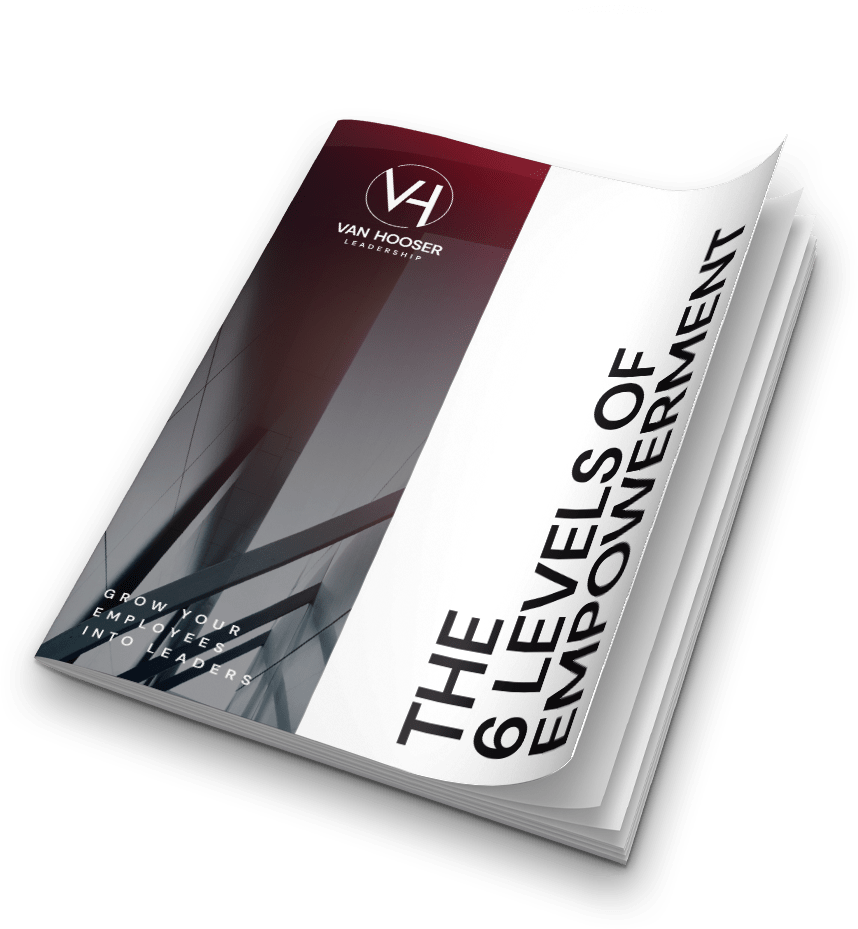The truth is, we work with clients who either want to overcome challenges or capitalize on opportunities. Today’s topic may cover both: manager burnout.
Across your organization, does it feel like everyone’s busy, but no one’s breathing? The strongest managers look tired. High performers are fading into disengagement. Executives are covering gaps they shouldn’t have to.
This isn’t just a performance issue — it’s likely a leadership systems issue. And it’s one you can fix.
Burnout and broken leadership pipelines aren’t solved with slogans or “self-care.” They’re solved by building systems of sanity — structures that protect clarity, capacity, and connection in the middle of uncertainty.
Don’t mistake structure as the opposite of culture. In reality, structure is the framework that fuels trust, accountability, and buy-in — especially in a diverse, fast-moving workplace.
Across industries, employees — especially high performers — are saying they don’t need more encouragement. They need traction.
Here’s how to get it — and measure it.
Spot The Warning Signs: Overload Up Top, Emptiness Down Below
If this feels like your organization, you’re not alone. Global data mirrors what you’re seeing firsthand:
Gartner (2025): Leadership scarcity ranks as a top enterprise risk.
McKinsey: Traditional leadership development programs fail to create enough “ready-now” leaders.
DDI: Over half of companies have no named successors for critical roles.
Translation: The bench is empty, the game’s still on, and the players on the field are running on fumes.
At times, leading today can feel like trying to organize a group chat — everyone’s in the thread, but rather than helping, it’s chaos.
The symptoms of weak people systems are painful:
- Managers trapped in back-to-back meetings with no time to coach performance.
- High performers quietly checking out because they see no clear leadership development path forward.
- Executives pulled into tactical decisions because no one below is ready to own them.
- Development budgets spent with no measurable rise in engagement, retention, or results.
These organizations aren’t short on empathy — they’re short on clarity.
Name The Real Problem: Lack Of Clarity And Disconnect
Uncertainty isn’t new — it’s the cost of doing business today. Markets shift. Teams reorganize. People change. Technology evolves faster than strategy.
But here’s the real issue: Most companies haven’t built leadership systems that help their people operate cohesively and strategically inside uncertainty.
Here’s what’s breaking most leadership pipelines:
- Span of control explosion: Managers lead too many people to coach anyone well.
- Development drought: Preparation, application, and reflection are replaced by reaction and firefighting.
- Successor silence: Future leaders aren’t being identified, tracked, or intentionally developed.
When people don’t think deeply and understand clearly, they stop working wisely. And when your culture rewards constant motion over meaningful progress, you don’t build leaders — you build burnout.
McKinsey’s State of Organizations report found that companies investing in leadership and capability-building during times of disruption are 2.4 times more likely to hit performance targets.
Clarity and capability aren’t just good leadership — they’re good business.
The Work Ahead: Rebuild Leadership Systems That Create Capacity And Momentum
There’s no quick fix here — but there is a measurable path forward.
Ask yourself: Can my leaders clearly define our leadership strategy and their next step toward it?
If not, start there.
Then, consider this as you define your next right steps.
A. Free Up Manager Bandwidth So They Can Lead Again
Clarity is oxygen for exhausted leaders — and essential to prevent manager burnout.
Audit meetings: Eliminate or combine anything that doesn’t produce outcomes. Track how many hours you free up monthly — that’s ROI. Reinvest that time in people.
Simplify reporting lines: Let managers lead people, not projects. One supervisor. Clear expectations. Consistent coaching cadence.
Hold quarterly reality checks: Senior leaders meet with cross-functional groups — and employees at all levels — to uncover where confusion and overload live. Fix what you find and show progress quickly.
Start small but measurable: End every week with a 10-minute “Big Three” reflection — what mattered most, what moved forward, what stalled and needs attention.
Structure creates clarity — and clarity fuels progress.
B. Make Leadership Development A Daily Discipline, Not An Annual Event
Leaders don’t grow from conferences or one-off conversations — they grow from consistency.
Embed growth right into the workweek:
- Schedule monthly 30-minute leadership development check-ins. Measure outcomes, application, and progress toward specific organizational goals.
- Pair growth assignments with 60-day accountability check-ins. Track completion, lessons learned, and next steps.
- Match mentors and coaches who bring clarity, not comfort — helping leaders own results tied to organizational priorities.
If your people are too busy to intentionally grow — individually and together — they’re too busy to be predictably successful moving forward. Don’t let that be the story of your team.
Resource: Learn more about the Van Hooser Six Levels of Empowerment, a practical framework to help leaders release control in stages — building confidence, competence, and trust without chaos.
If you’ve ever tried to “empower” your team only to end up answering 47 follow-up emails about it, you already know: empowerment without clarity and a system is just chaos in business casual.
C. Make Succession Planning A Living, Breathing System
Succession planning isn’t a spreadsheet — it’s a strategy for organizational stability and opportunity, from the front lines to the C-suite.
Name successors for every role, especially key roles — even if they’re not “ready yet.” Visibility and clarity motivate growth.
Define readiness gaps, create measurable development sprints, and track progress quarterly.
Visualize your bench. Make the goal clear. Paint the picture. Transparency beats anxiety every time.
Measure it:
- What percentage of key roles have identified successors?
- What percentage of those successors know they’re being developed?
- What percentage have documented growth plans?
When people know the plan, they align faster. When they don’t, they leave faster.
The Payoff: Leaders Who Think Clearly, Act Decisively, And Deliver Predictably
- Burnout drops because focus replaces frenzy.
- Capability grows because leaders develop while delivering results.
- Trust rises because communication is transparent and consistent.
And here’s the bigger win — once you build leadership systems that work, uncertainty becomes your competitive advantage, both for employees and customers.
When leaders invest in clarity and structure, results follow predictably.
Next Step: Hold A 90-Minute Leadership Capacity Conversation
Set aside one focused 90-minute meeting with your executive and HR teams. You don’t need slides or spreadsheets — just honesty, markers, and a whiteboard.
Here’s what to do:
- Assess span of control. Does any manager have so many direct reports they can’t coach effectively? Adjust the structure or add support.
- Identify pressure points. Where are people the most tired, confused, or stuck? Write down the top three and commit to one small change this month.
- Name successors. For every key role, name at least one person who could grow into it. Don’t worry if they’re not ready — clarity drives readiness.
- Develop them. What specific skills do they need? Who can mentor or coach them? Assign one concrete step and a start date.
That’s it. Four simple actions. Not a binder. Not a program. Just clarity.
If you’d like help facilitating this conversation or turning it into a repeatable leadership development system, that’s what we do every day at Van Hooser Leadership. Connect with us now.
FAQs
Isn’t reducing meetings or adding layers risky?
It can be — but exhausted leaders make poor decisions. Simplifying isn’t losing control; it’s regaining it.
What if no one’s ready for succession?
Then you’ve just identified your next priority. Clarity plus coaching creates capability.
What if the successor — or the person passed over — leaves?
Transparency costs less than turnover. When people know where they stand, trust strengthens even when decisions shift.
How can leaders measure the impact of reducing burnout?
Track meeting hours reduced, engagement scores, and turnover rates in the six months following structural changes. The data will tell the story.
What’s the difference between leadership development and succession planning?
Leadership development prepares people to perform better now. Succession planning prepares people to lead later. You need both for long-term stability.
Final Thought
Many well-intentioned leaders tell their teams to “step up” or “take care of themselves,” hoping it helps. It doesn’t.
Encouragement, a kick in the butt, and yoga mats don’t fix system failure.
Team growth should be a well-oiled leadership system — because your team is your most valuable asset.
The organizations that will thrive in the next decade won’t be the loudest or flashiest — they’ll be the ones that build leadership systems strong enough to withstand uncertainty and wise enough to turn it into opportunity.
At the end of the day, great leadership isn’t about working harder. It’s about leading wiser — and that requires clarity that lasts.
Copyright © 2025 Van Hooser Leadership. For coaching or leadership development training, visit vanhooser.com.










